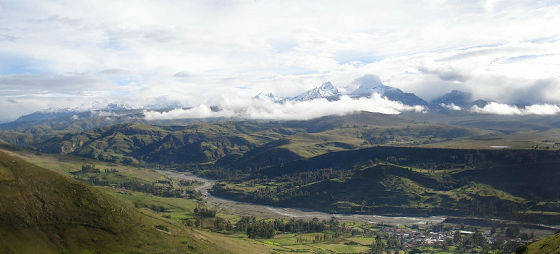College students succeeded in decoding the knotted string "Keep" used for recording in the Inca Empire that did not have letters

The Inca Empire that existed in South America from the 13th century to the 16th century was a civilization without letters, so knowing its history is limited. However, using a knot to record events etc. "khipus (keep)It is known that we used strings called "Inca civilization" called "Meaning", and the work of deciphering "meaning" has been continued. Meanwhile, students at Harvard University have used spring breaks to start deciphering the keeps and have succeeded in finding secrets that they had not understood until then.
The College Student Who Decoded the Data Hidden in Inca Knots - Atlas Obscura
https://www.atlasobscura.com/articles/khipus-inca-empire-harvard-university-colonialism
Because the Inca Empire did not use letters, there are few records about civilization.Machu PicchuIn contrast to the magnificent buildings like the one left in modern times, what we know about the Inca empire is only the records that the Spaniard who conquered the Incan Empire left behind. However, there are many archaeologists with the idea that these Inca Empire history is the view from the invader side, not accurately reflecting the Inca civilization, so the string that the Inca people used for recording "Keep" Decoding work is being done all over the world.

Mr. Manny Medlano who was a first year student at Harvard University learned the existence of the keeping used in the Inca Empire in the archeology class of Professor Gary Ulton who happened to attend. Professor Ulton himself is also working on deciphering the keep, but in the lecture, I told the students that "students interested in trying to decipher the record during a spring break with a massive time" Medorano was strongly attracted interest. "I do not know where I came from wanting to find secrets of the past, but I certainly have grown up in me," Medlano said about the impulse received during the lecture.
Upon receiving Medorano 's application, Professor Ulton provided six keeps, and work of deciphering Inca formula bookkeeping began. For these six keeps, Professor Ulton was accidentally finding a Spanish census document recorded in the same era of the same Santa Valley area. By comparing this census record with Keep, Medlano did the work of deciphering the contents recorded in Keep.

Medlano said that he input data into a Microsoft Excel spreadsheet based on the material provided by Professor Ulton and graphed some data and searched for patterns. Mr Medolano, born in a Mexican-American family, was able to read and write Spanish, so reading comprehension written in Spanish did not hinder the reading at all. Also, since I majored in economics, I have no problem in dealing with figures and data. In addition, Medlano who loves to solve puzzles and Sudoku seems to have felt much more profound acts than those games, for Medlano who loves to solve puzzles and Sudoku, Medolano has the perfect qualities for Keep's reading comprehension work It seems that it was.
Medrano discovered that the deciphering work found that the method of knot of each keep correlated too strongly to the social position of 132 people recorded in the census. As soon as the spring break was over, Professor Ulton revealed the theory about the code. "What a thing! Professor Ulton recalls about the impact at that time," I remember quite excited that this young man managed to accomplish certainly.

After that the collaborative work of Keep was continued by Mr. Medolano and Professor Ulton. Professor Ulton said, "If you point out something, Medwayan understands something deeper after a couple of weeks," Mr. Medolano's extraordinary comprehension comprehension ability says, "The way in which the pendant code is linked to the top code is social We have succeeded in locating the fact that it shows a group. " This is, of course, the first discovery in the world, and the results of this research will be posted as a paper in January 2018 after being reviewed by the scientific journal Ethnohistory. In this paper Mr. Medolano serves as the first author, which shows Mr. Medolano's high degree of contribution.
About this research result Dr. Sabin Highland, who studies the Andean Anthropology at St. Andrews University, said "Medlano's discovery is the first in the world to be thrilling," highly appreciated. According to Professor Ulton, using this discovery as a foothold can be expected to bring more discoveries. Mr Medolano and Professor Ulton are excited about the possibility to understand the history of Inca from the perspective of the land apart from the history of conquistadors.

Related Posts:
in Science, Posted by darkhorse_log







